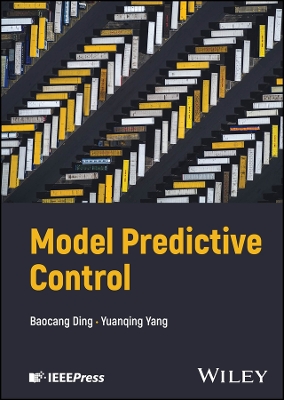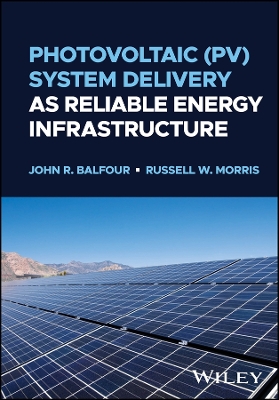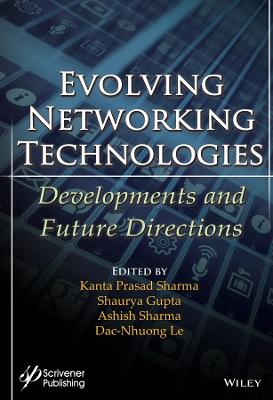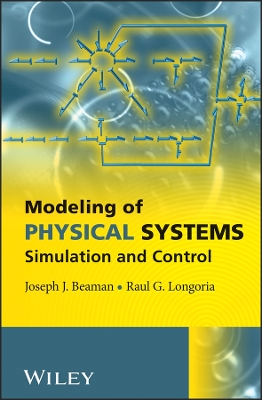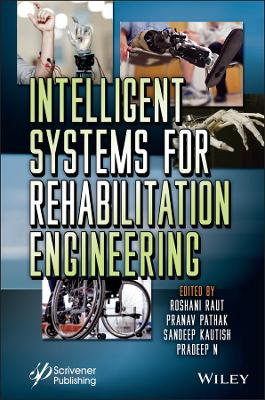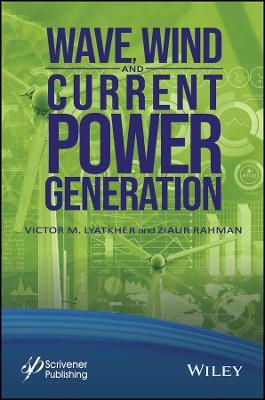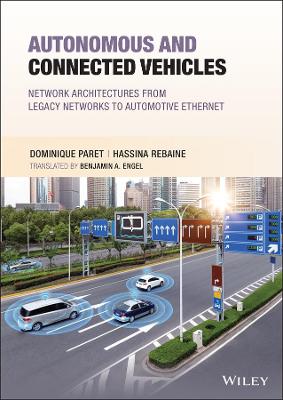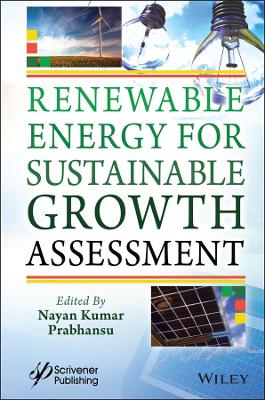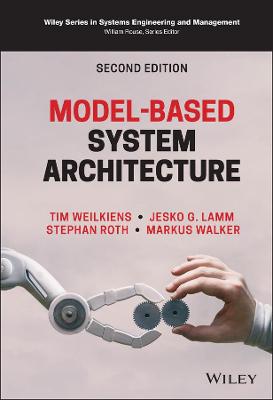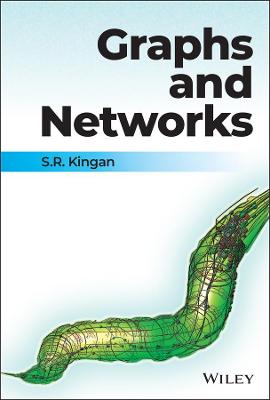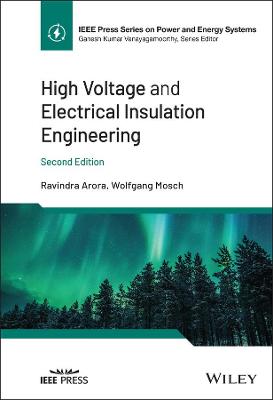Nuclear Electronics with Quantum Cryogenic Detectors
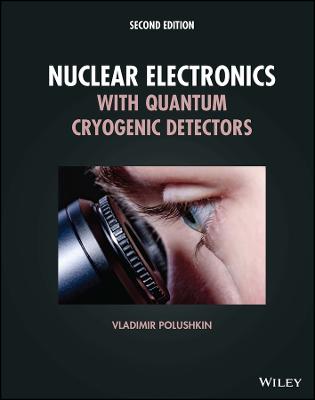 -15%
portes grátis
-15%
portes grátis
Nuclear Electronics with Quantum Cryogenic Detectors
Polushkin, Vladimir
John Wiley & Sons Inc
09/2022
448
Dura
Inglês
9781119834687
15 a 20 dias
1362
Chapter 1. Interaction of nuclear radiation with detector absorbers
Introduction.
1.1. Intrinsic quantum efficiency of radiation detectors.
1.2. Detection of charged particles.
1.2.1. Light charged particles.
1.2.2. Continuous "braking" radiation (bremsstrahlung).
1.2.3. Backscattering of charged particles.
1.2.4. Heavy charged particles.
1.3. Primary interactions of X- and ?-ray photons with solid-state absorbers.
1.3.1. The photoelectric effect.
1.3.2. The Compton scattering.
1.3.3. The pair production.
1.3.4. Attenuation of photon radiation in solid-state detector absorbers
1.4. Detection of neutrons with solid-state radiation sensors.
1.5. Heat generation in athermal absorbers.
Chapter 2. Radiation detectors with superconducting absorbers
Introduction.
2.1. Selected topics of the superconductivity theory
2.1.1. The electron-phonon interaction and Cooper pairing mechanisms
2.1.2. The behaviour of superconductors in the magnetic field.
2.1.3. The tunnel Josephson junction.
2.1.4. The superconducting transmission line: the kinetic inductance.
2.2. Superconducting absorbers: the down-conversion of particle energy, intrinsic energy resolution.
2.2.1. The energy down-conversion process in superconducting absorbers.
2.2.2. The intrinsic energy resolution of quasi-particle detectors with superconducting absorbers.
2.3. Transport in the non-equilibrium superconductors. Incomplete charge collection mechanisms
2.3.1. The recombination time of quasi-particles in superconducting absorbers
2.3.2. The Rothwarf-Taylor phenomenological framework
2.3.3. The diffusion of quasi-particles in thin-film superconducting absorbers. Incomplete charge collection
2.3.4. Noise Equivalent Power (NEP) of superconducting absorbers
2.4. Quasi-particle radiation detectors with Superconducting Tunnel Junction (STJ) readout
2.4.1. The bandgap engineering and fabrication of STJ detectors.
2.4.2. The Giaever I-V curve of the STJ.
2.4.3. The tunneling mechanisms in STJs.
2.4.4. Pile-up and count rate capability of the STJ detectors.
2.5. Quasi-particle radiation detectors with microwave kinetic inductance sensors (MKID)
2.5.1. The operating principle of microwave kinetic inductance sensors.
2.5.2. The DROID X-ray detector with microwave kinetic inductance sensor readout.
2.6. STJ detectors frequency domain multiplexing with microwave SQUIDs
Chapter 3. Radiation detectors with normal metal absorbers
Introduction
3.1. Spectrometers based on Transition Edge Sensor (TES) microcalorimeters.
3.1.1. Fundamentals of TES design.
3.1.2. The electro-thermal feedback in TES microcalorimeters.
3.2. TES Microcalorimeters with Microwave SQUID (MSQUID) readout. Imaging cameras
3.3. Hot electron microcalorimeter with the NIS tunnel junction thermometer
Chapter 4. Radiation detectors with semiconductor absorbers
Introduction
4.1. Semiconductor transport.
4.1.1. Valence bond and energy band models.
4.1.2. Carrier scattering mechanisms and mobility in the semiconductor bulk materials.
4.1.3. Carrier generation and recombination (G-R) processes.
4.1.4. Effects of the G-R transport on the performance of radiation detectors.
4.1.5. Tunneling-assisted transport in semiconductor materials.
4.1.6. Tunneling transport across the thin dielectric barrier.
4.1.7. The semiconductor-vacuum interface. Surface transport
4.2. Macroscopic modelling of semiconductor devices
4.2.1. Microscopic models based on the Schroedinger Equation
4.2.2. The semi-classical transport models
4.2.3. The initial and boundary conditions in device modeling. The Ramo-Shockley theorem
4.3. Front windows in semiconductor radiation detectors
4.3.1. Entrance window based on the Schottky barrier junction
4.3.2. Front window based Metal-Insulator-Semiconductor (MIS) junction
4.3.3. The pn junction based front window in radiation detectors
4.4. Fabrication of semiconductor drift detectors (SDD)
4.4.1. The epitaxially grown ultra-shallow p+n junction entrance windows
4.4.2. The pureB technology for ultra-shallow entrance windows
4.5. Semiconductor drift detectors
4.5.1. Semiconductor detectors: operation principle and performance specifications
4.5.2. The intrinsic energy resolution of semiconductor detectors
4.5.3. Time response of SDDs
4.6. The quantum calorimetric electron-hole detector with semiconductor absorber
4.6.1. The phonon system dynamics in semiconductor materials
4.6.2. The design and performance of the quantum electron-hole detectors
Chapter 5. Front End Readout Electronic Circuits for Quantum Cryogenic Detectors.
Introduction
5.1 JFET transconductance preamplifiers
5.1.1. Principles of JFET transconductance amplifiers
5.1.2. Settling time of preamplifiers
5.2Dynamic and noise properties of JFET amplifiers
5.2.1. Static and dynamic parameters of JFETs
5.2.2. Noise characteristics of JFETs
5.2.3. PentaFET. High precision reset mechanism
5.2.4. The JFET cascode stage
5.2.5. The source follow-based charge-sensitive preamplifier
5.2.6. The differential stage based on matched JFETs
5.3 High Electron Mobility Transistor (HEMT) low noise amplifiers
5.4. The dc SQUID current amplifiers
5.4.1. The dcSQUID as a superconducting parametric amplifier
5.4.2. The dcSQUID with an intermediary input transformer
5.4.3. The coupled energy resolution of a double transformer dcSQUID
5.4.4. The dcSQUID readout electronics
5.4.5. The dcSQUID with the digital Bode FLL controller
5.4.6. The dcSQUID amplifier in the small-signal limit (noise)
5.4.7. The dcSQUID current amplifier in the large signal limit (dynamics)
5.4.8. The dcSQUID current amplifier in the large signal limit (noise)
5.5dc SQUID current amplifier at ultra low temperature
5.5.1. A double-stage amplifier with a single front ULT dcSQUID
5.5.2. A double stage amplifier with the front ULT SQUID array
5.6 Microwave SQUID parametric amplifier
5.6.1. Operation principle of microwave SQUIDs with external pumping (MSQUIDs)
5.6.2. The non-linearities in the MSQUID readout
5.6.3. The flux-ramp modulation methodology
5.6.4. Performance of MSQUID current amplifier
5.7 Design methodologies of analogue circuitries
5.7.1. The Laplace transform. Transfer functions of electronic networks
5.7.2. Design of analog pulse-shaping filter cells
5.7.3. Design of low-pass filters
5.7.4. Graphical methods of analysis and synthesis in the frequency domain
5.7.5. The describing function of non-linear elements in the frequency domain
5.7.6. Systems with synchronous multipliers
Chapter 6. The Energy Resolution of Radiation Spectrometers.
Introduction
6.1 Signal-to-noise ratio, equivalent noise charge of radiation spectrometers. General definitions
6.2Energy resolution of quasi-particle detectors (STJs, SDDs)
6.2.1. The tunnel junction coupled to a JFET transconductance amplifier
6.2.2. Energy resolution of STJ sensors read out with SQUID current preamps
6.3Optimal filtration in radiation spectrometers
6.4Energy resolution of TES microcalorimeters
6.5Matrix readout multiplexing of STJ detectors
6.5.1. Matrix readout of STJ sensors with JFET transconductance amplifiers
6.5.2. Matrix readout with SQUID current amplifiers
6.6Time division multiplexing (TDM)
6.7 Frequency division multiplexing (FDM) with microwave SQUIDs (?MUX)
6.8Code division multiplexing (CDM). Spread spectrum modulation (SSM)
Chapter 7. Signal processing in radiation spectrometers
Introduction
7.1. Signal conditioning units
7.1.1. Overview digital pulse processing architectures
7.1.2. AC coupled digital spectrometers
7.1.3. Digital pulse processing with moving window deconvolution
7.1.4. DC-coupled digital pulse processors
7.1.5. DC-coupled digital pulse processors with a sliding window signal conditioner
7.2.Analogue-to-digital conversion
7.2.1. Analog-to-digital converters. Basic information
7.2.2. The quantisation noise model of ADC
7.2.3. Nonlinearities of ADC
7.2.4. Aperture time of ADCs
7.2.5. Aperture uncertainty of ADCs
7.2.6. Reduction of the differential nonlinearity with the sliding scale method
7.3.Digital filtration
7.3.1. Z-transform methodology
7.3.2. Design of digital filters with z-transform
7.3.3. The stability of digital filters
7.3.4. Trapezoidal pulse shaping digital filter
7.3.5. Moving average pulse processing
7.4.Throughput of digital spectrometers
7.4.1. Pulse recognition channel. Pile up detection
7.4.2. Timing resolution of digital spectrometers
7.4.3. The pile up decoding in digital pulse processors
7.4.4. Digital rise (fall) time discriminators
7.5.Selected topics on the hardware design
7.5.1. Noise reduction in systems with switching power supplies
7.5.2. PCB layout
7.5.3. Layout, decoupling, and grounding of ADCs
7.5.4. Grounding aspects of the system design
Chapter 8. Ultra-Low Temperature (ULT) cryogenic arrangement.
Introduction
8.1. Cooling technologies for sub-1K temperature
8.1.1. The 3He refrigerator
8.1.2. The adiabatic demagnetisation refrigerator (ADR)
8.1.3. Temperature control in ADRs
8.2.Magnetic shielding at ultra low temperature
8.2.1. The ?-metal shield
8.2.2. The superconducting shielding
8.2.3. Solenoid inside a cylindrical superconducting shield
8.3.Thermal load on ULT stages
8.3.1.Thermal conduction through solids
8.3.2. Thermal conduction through the gas
8.3.3. Thermal radiation
8.4.Cryogenic packaging for the Focal Plane Array (FPA) unit
8.4.1. Design of the FPA unit implementing the TDM technique
8.4.2. The collimation of the FPA unit
8.4.3. Solid angle of the nuclear radiation spectrometer
8.4.4. Focusing poly-capillary optics
8.4.5. Wiring at mK temperatures
8.5.Cryogenic design for detectors with micro-wave frequency division multiplexing
8.6.The collection efficiency of radiation spectrometers
Chapter 9. Applications of radiation spectrometers based on quantum cryogenic detectors
Introduction
9.1.Nano-analytical chemistry with the SEM electron probe
9.1.1. The SEM-based energy dispersive spectroscopy (EDS)
9.1.2. The dual array TES-based EDS
9.1.3. Complementary techniques in the electron probe nano-analysis: the Auger spectroscopy
9.1.4. Complementary techniques in the electron probe nano-analysis: the wavelength dispersive spectrometers
9.2.Energy dispersive MALDI-TOF mass spectrometry for biochemical analysis
Index
Chapter 1. Interaction of nuclear radiation with detector absorbers
Introduction.
1.1. Intrinsic quantum efficiency of radiation detectors.
1.2. Detection of charged particles.
1.2.1. Light charged particles.
1.2.2. Continuous "braking" radiation (bremsstrahlung).
1.2.3. Backscattering of charged particles.
1.2.4. Heavy charged particles.
1.3. Primary interactions of X- and ?-ray photons with solid-state absorbers.
1.3.1. The photoelectric effect.
1.3.2. The Compton scattering.
1.3.3. The pair production.
1.3.4. Attenuation of photon radiation in solid-state detector absorbers
1.4. Detection of neutrons with solid-state radiation sensors.
1.5. Heat generation in athermal absorbers.
Chapter 2. Radiation detectors with superconducting absorbers
Introduction.
2.1. Selected topics of the superconductivity theory
2.1.1. The electron-phonon interaction and Cooper pairing mechanisms
2.1.2. The behaviour of superconductors in the magnetic field.
2.1.3. The tunnel Josephson junction.
2.1.4. The superconducting transmission line: the kinetic inductance.
2.2. Superconducting absorbers: the down-conversion of particle energy, intrinsic energy resolution.
2.2.1. The energy down-conversion process in superconducting absorbers.
2.2.2. The intrinsic energy resolution of quasi-particle detectors with superconducting absorbers.
2.3. Transport in the non-equilibrium superconductors. Incomplete charge collection mechanisms
2.3.1. The recombination time of quasi-particles in superconducting absorbers
2.3.2. The Rothwarf-Taylor phenomenological framework
2.3.3. The diffusion of quasi-particles in thin-film superconducting absorbers. Incomplete charge collection
2.3.4. Noise Equivalent Power (NEP) of superconducting absorbers
2.4. Quasi-particle radiation detectors with Superconducting Tunnel Junction (STJ) readout
2.4.1. The bandgap engineering and fabrication of STJ detectors.
2.4.2. The Giaever I-V curve of the STJ.
2.4.3. The tunneling mechanisms in STJs.
2.4.4. Pile-up and count rate capability of the STJ detectors.
2.5. Quasi-particle radiation detectors with microwave kinetic inductance sensors (MKID)
2.5.1. The operating principle of microwave kinetic inductance sensors.
2.5.2. The DROID X-ray detector with microwave kinetic inductance sensor readout.
2.6. STJ detectors frequency domain multiplexing with microwave SQUIDs
Chapter 3. Radiation detectors with normal metal absorbers
Introduction
3.1. Spectrometers based on Transition Edge Sensor (TES) microcalorimeters.
3.1.1. Fundamentals of TES design.
3.1.2. The electro-thermal feedback in TES microcalorimeters.
3.2. TES Microcalorimeters with Microwave SQUID (MSQUID) readout. Imaging cameras
3.3. Hot electron microcalorimeter with the NIS tunnel junction thermometer
Chapter 4. Radiation detectors with semiconductor absorbers
Introduction
4.1. Semiconductor transport.
4.1.1. Valence bond and energy band models.
4.1.2. Carrier scattering mechanisms and mobility in the semiconductor bulk materials.
4.1.3. Carrier generation and recombination (G-R) processes.
4.1.4. Effects of the G-R transport on the performance of radiation detectors.
4.1.5. Tunneling-assisted transport in semiconductor materials.
4.1.6. Tunneling transport across the thin dielectric barrier.
4.1.7. The semiconductor-vacuum interface. Surface transport
4.2. Macroscopic modelling of semiconductor devices
4.2.1. Microscopic models based on the Schroedinger Equation
4.2.2. The semi-classical transport models
4.2.3. The initial and boundary conditions in device modeling. The Ramo-Shockley theorem
4.3. Front windows in semiconductor radiation detectors
4.3.1. Entrance window based on the Schottky barrier junction
4.3.2. Front window based Metal-Insulator-Semiconductor (MIS) junction
4.3.3. The pn junction based front window in radiation detectors
4.4. Fabrication of semiconductor drift detectors (SDD)
4.4.1. The epitaxially grown ultra-shallow p+n junction entrance windows
4.4.2. The pureB technology for ultra-shallow entrance windows
4.5. Semiconductor drift detectors
4.5.1. Semiconductor detectors: operation principle and performance specifications
4.5.2. The intrinsic energy resolution of semiconductor detectors
4.5.3. Time response of SDDs
4.6. The quantum calorimetric electron-hole detector with semiconductor absorber
4.6.1. The phonon system dynamics in semiconductor materials
4.6.2. The design and performance of the quantum electron-hole detectors
Chapter 5. Front End Readout Electronic Circuits for Quantum Cryogenic Detectors.
Introduction
5.1 JFET transconductance preamplifiers
5.1.1. Principles of JFET transconductance amplifiers
5.1.2. Settling time of preamplifiers
5.2Dynamic and noise properties of JFET amplifiers
5.2.1. Static and dynamic parameters of JFETs
5.2.2. Noise characteristics of JFETs
5.2.3. PentaFET. High precision reset mechanism
5.2.4. The JFET cascode stage
5.2.5. The source follow-based charge-sensitive preamplifier
5.2.6. The differential stage based on matched JFETs
5.3 High Electron Mobility Transistor (HEMT) low noise amplifiers
5.4. The dc SQUID current amplifiers
5.4.1. The dcSQUID as a superconducting parametric amplifier
5.4.2. The dcSQUID with an intermediary input transformer
5.4.3. The coupled energy resolution of a double transformer dcSQUID
5.4.4. The dcSQUID readout electronics
5.4.5. The dcSQUID with the digital Bode FLL controller
5.4.6. The dcSQUID amplifier in the small-signal limit (noise)
5.4.7. The dcSQUID current amplifier in the large signal limit (dynamics)
5.4.8. The dcSQUID current amplifier in the large signal limit (noise)
5.5dc SQUID current amplifier at ultra low temperature
5.5.1. A double-stage amplifier with a single front ULT dcSQUID
5.5.2. A double stage amplifier with the front ULT SQUID array
5.6 Microwave SQUID parametric amplifier
5.6.1. Operation principle of microwave SQUIDs with external pumping (MSQUIDs)
5.6.2. The non-linearities in the MSQUID readout
5.6.3. The flux-ramp modulation methodology
5.6.4. Performance of MSQUID current amplifier
5.7 Design methodologies of analogue circuitries
5.7.1. The Laplace transform. Transfer functions of electronic networks
5.7.2. Design of analog pulse-shaping filter cells
5.7.3. Design of low-pass filters
5.7.4. Graphical methods of analysis and synthesis in the frequency domain
5.7.5. The describing function of non-linear elements in the frequency domain
5.7.6. Systems with synchronous multipliers
Chapter 6. The Energy Resolution of Radiation Spectrometers.
Introduction
6.1 Signal-to-noise ratio, equivalent noise charge of radiation spectrometers. General definitions
6.2Energy resolution of quasi-particle detectors (STJs, SDDs)
6.2.1. The tunnel junction coupled to a JFET transconductance amplifier
6.2.2. Energy resolution of STJ sensors read out with SQUID current preamps
6.3Optimal filtration in radiation spectrometers
6.4Energy resolution of TES microcalorimeters
6.5Matrix readout multiplexing of STJ detectors
6.5.1. Matrix readout of STJ sensors with JFET transconductance amplifiers
6.5.2. Matrix readout with SQUID current amplifiers
6.6Time division multiplexing (TDM)
6.7 Frequency division multiplexing (FDM) with microwave SQUIDs (?MUX)
6.8Code division multiplexing (CDM). Spread spectrum modulation (SSM)
Chapter 7. Signal processing in radiation spectrometers
Introduction
7.1. Signal conditioning units
7.1.1. Overview digital pulse processing architectures
7.1.2. AC coupled digital spectrometers
7.1.3. Digital pulse processing with moving window deconvolution
7.1.4. DC-coupled digital pulse processors
7.1.5. DC-coupled digital pulse processors with a sliding window signal conditioner
7.2.Analogue-to-digital conversion
7.2.1. Analog-to-digital converters. Basic information
7.2.2. The quantisation noise model of ADC
7.2.3. Nonlinearities of ADC
7.2.4. Aperture time of ADCs
7.2.5. Aperture uncertainty of ADCs
7.2.6. Reduction of the differential nonlinearity with the sliding scale method
7.3.Digital filtration
7.3.1. Z-transform methodology
7.3.2. Design of digital filters with z-transform
7.3.3. The stability of digital filters
7.3.4. Trapezoidal pulse shaping digital filter
7.3.5. Moving average pulse processing
7.4.Throughput of digital spectrometers
7.4.1. Pulse recognition channel. Pile up detection
7.4.2. Timing resolution of digital spectrometers
7.4.3. The pile up decoding in digital pulse processors
7.4.4. Digital rise (fall) time discriminators
7.5.Selected topics on the hardware design
7.5.1. Noise reduction in systems with switching power supplies
7.5.2. PCB layout
7.5.3. Layout, decoupling, and grounding of ADCs
7.5.4. Grounding aspects of the system design
Chapter 8. Ultra-Low Temperature (ULT) cryogenic arrangement.
Introduction
8.1. Cooling technologies for sub-1K temperature
8.1.1. The 3He refrigerator
8.1.2. The adiabatic demagnetisation refrigerator (ADR)
8.1.3. Temperature control in ADRs
8.2.Magnetic shielding at ultra low temperature
8.2.1. The ?-metal shield
8.2.2. The superconducting shielding
8.2.3. Solenoid inside a cylindrical superconducting shield
8.3.Thermal load on ULT stages
8.3.1.Thermal conduction through solids
8.3.2. Thermal conduction through the gas
8.3.3. Thermal radiation
8.4.Cryogenic packaging for the Focal Plane Array (FPA) unit
8.4.1. Design of the FPA unit implementing the TDM technique
8.4.2. The collimation of the FPA unit
8.4.3. Solid angle of the nuclear radiation spectrometer
8.4.4. Focusing poly-capillary optics
8.4.5. Wiring at mK temperatures
8.5.Cryogenic design for detectors with micro-wave frequency division multiplexing
8.6.The collection efficiency of radiation spectrometers
Chapter 9. Applications of radiation spectrometers based on quantum cryogenic detectors
Introduction
9.1.Nano-analytical chemistry with the SEM electron probe
9.1.1. The SEM-based energy dispersive spectroscopy (EDS)
9.1.2. The dual array TES-based EDS
9.1.3. Complementary techniques in the electron probe nano-analysis: the Auger spectroscopy
9.1.4. Complementary techniques in the electron probe nano-analysis: the wavelength dispersive spectrometers
9.2.Energy dispersive MALDI-TOF mass spectrometry for biochemical analysis
Index

